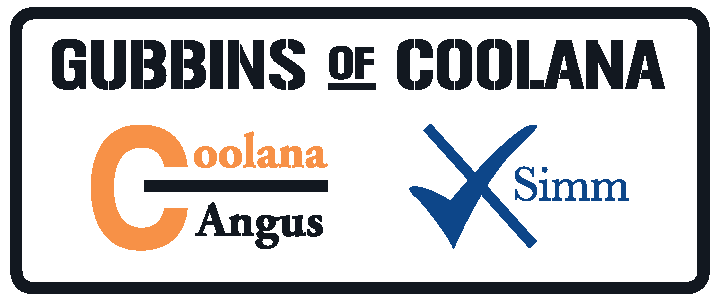Sheep
Coolana has been running a sheep operation since 1930. At first Arthur Gubbins ran 5000 Merino sheep, then in 1934 he established Coolana Corriedales. When John Gubbins took over the day to day management of Coolana in the late 1950s, his father still lived on the property and remained significantly involved with both the cattle and sheep. Together they built up the Corriedale stud to approximately 1500 registered sheep. The Coolana sheep were keenly sought after and at the height of their success, in the mid-1980s, Coolana was selling around 400 rams annually. It was certainly one of – if not the – largest Corriedale studs in Victoria.
When Mark returned to the “fold” in 1985 all was going well on the sheep front. The wool boom continued. However, with the reserve price scheme helping to draw traditionally strong-wool breeders to move across to the more lucrative fine wool Merinos, the demand for Corriedales declined. Unfortunately, the Corriedale wool of around the 25- to 30-micron zone was becoming harder to sell, therefore the sale of rams nearly halved in that period, and fell off very quickly after that.
After much scrutiny and discussion Mark decided to make the sheep a totally commercial operation. In 2000 Coolana Corriedale Stud was officially deregistered and, with minimal demand for the stud ewes, they were amalgamated with the flock sheep.
However, back in 1993 Mark and John had imported some Texel embryos, with the aim of building a more prime-lamb focussed enterprise. Thus the Coolana Texel stud was established as an Australian Foundation Stud. This was run successfully for a number of years – supplying rams for the Coolana first-cross business and also for selling stud rams. But it never became the enterprise they had hoped for. Mark was “losing interest” in the sheep, as his passion for Angus cattle took over. So John maintained the sheep side of the business with a view to keeping it on for the boys, Ben and Max, if they so desired.
Eventually breeder interest in Texels completely waned, and in 2006 the stud was dispersed and sold. However, Mark knew that sheep were needed on the place as another “egg basket”. He had ideas for a first-cross, or composite, program with the existing commercial flock. He intended to introduce breeds of sheep he thought would complement a prime lamb business, looking for maternal ability, early lamb maturity and fertility. The rams he introduced included East Friesian, Suffolk – both black and white faced – and Poll Dorsets. This brought mixed success – the fertility figures didn’t meet expectations – but the maturity rate of lambs was lowered by three to four months, thus producing a better quality lamb which could be turned off earlier.
Over the next 10 to 15 years they achieved their goals of meeting the domestic and export markets. But the wool industry was now suffering across the board, especially for strong wools. By now the wool at Coolana was up to a 32- to 34-micron count, some with Medullated (dark) fibre – a scourge on the wool industry. Thus another change in direction was needed.
The cost of shearing, compared to the amount and quality of wool available, was by now unviable. Mark researched different breeds of shedding sheep. He looked at sheep in America, Africa and UK to see what was available, and came across the Dorper, already in Australia from South Africa. Dorpers worked well from a wool point of view – reducing the need for shearing – but as time went on structural problems were revealed. So in a reasonably short space of time Coolana went from having a very functional, structurally sound sheep to having diabolically unsound sheep! Thus the 5- to 10-year plan was quickly re-evaluated and Mark looked for alternatives in the shedding area. Coolana currently runs around 1500 shedding sheep and 1500 non-shedding sheep, mostly in a feed-lot situation.
Mark has been known to “joke” that he hates sheep, but it’s all a front! Commercially Mark has taken a lot of pleasure over the years from breeding sheep and has enjoyed finding new ways to improve the quality of lambs, and sourcing new markets. With his passion lying in the beef industry, Mark has only maintained sheep on Coolana so Max could take up the challenge when the time was right. He had already accepted that if sheep were to leave Coolana “so be it”.
Now Max is home – and has taken on the sheep challenge. At this stage he will persevere with the shedders, putting high emphasis on classing for structural soundness. While the composite flock is being selected for lambing percentage along with maternal traits and structural integrity.
Max is focussed on producing lambs for early maturity – meaning the lamb is sale ready and ‘finished’ for market at an earlier age. This will be a major advantage, with reduced management costs and decreased stress on the ewes.
Sheep have been a large part of the Coolana landscape – both in a physical and business sense – for three generations. It is fantastic that Max – the fourth generation – has ‘accepted the baton’ and sheep will continue to be run on the property – with a new purpose, and successful outcomes.
